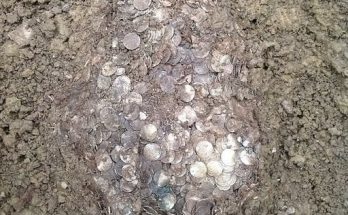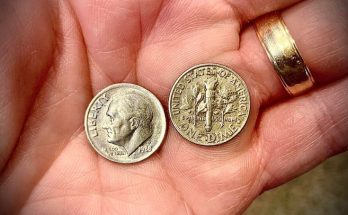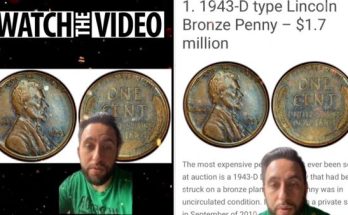Two-dollar bills are uncommon, but are they worth more than their face value?
Are Two-Dollar Bills Worth Anything?
Yes! Two-dollar bills are worth a whopping two dollars—well, most of the time. Sometimes, they’re worth a lot more! To understand why, first you need to know a little more about this uncommon bill.
Pretty But Unpopular Paper Money
Shrouded with mystery and sometimes met with disbelief, the two-dollar bill is quite possibly the most unique paper note currently circulating in the United States. With a portrait of Thomas Jefferson on the obverse of the note and a depiction of the signing of the Declaration of Independence on the reverse, two-dollar bills are very pleasing to the eye.
Unfortunately, the two-dollar bill is not popular as actual currency, so it’s not as heavily circulated as the other bill denominations. (Have you ever tried to pay for something with a two-dollar bill? Many cashiers don’t even recognize it!) Its rarity has caused the misinformed belief that the bills are somehow very valuable.
Which Two-Dollar Bills Are Valuable?
Well, for the most part, these bills are simply worth their face value of two dollars—unless you have a really old one or a bill that never entered circulation (meaning it’s totally clean and crisp). In this article, we will explore the history of this unique note and the methods by which we can determine its worth.
Two-Dollar Bill Value Chart
| Series and Type | Value (Circulated) | Value (Uncirculated) |
|---|---|---|
| 1862 | $500–$1,000 | $2,800+ |
| 1869 | $500–$1,200 | $3,800+ |
| 1880 Brown/Blue Serial # | $600–$2,200 | $3,500+ |
| 1890 Brown or Red | $550–$2,500 | $4,500+ |
| 1918 | $175–$375 | $1,000+ |
| 1928B | $70–$175 | $1,000+ |
| 1953 | $2.25–$2.50 | $12.75 |
| 1963 | $6.00 | $20.50 |
| 1976 | $2.50 | $4.25 |
| 1995 | $2.10 | $3.25 |
| 2003 | $2.00 | $3.00 |
| 2009 | $2.00 | $2.25 |
| 2013, 2017, 2017A | $2.00 | $2.00 |
How to Determine the Value of Two-Dollar Bills
When you receive a two-dollar bill, manage your expectations. Although it may seem like you’ve stumbled on a national treasure, the truth of the matter is the bill is probably not valuable (at least, not yet) and should be spent like any other paper money.
You can check the year and type of the bill on the U.S. Currency Auctions (USCA) website to see if it’s worth anything. The data in the value chart above comes from the USCA.
Modern Bills vs. Old Bills
As you can see in the chart, two-dollar bills produced between 2003–2017 that are in circulation are worth—surprise, surprise—two dollars. 1995 bills are worth just slightly more at $2.10, and 1976 bills are only worth $2.50. Even the uncirculated versions of these bills max out at a value of $3.25, which won’t make anyone rich.
The older bills can be worth hundreds or thousands of dollars, but of course these are much harder to find. The most valuable two-dollar bill of all is the 1890 Brown or Red note, which runs for $500–$2,500 circulated and upwards of $4,500 uncirculated. (“Brown” and “Red” refer to the color of the seal on the note. See the 1880 note shown below for an example.)

This is an 1880 bill with a brown seal and a red serial number. You can see how different the artwork is from today’s bill!
National Numismatic Collection, National Museum of American History, CC0, via Wikimedia; Canva
Two-Dollar Bill: History and Trivia
- Before printed money was standardized and produced at a specific size, the two-dollar bill spent its early life in the form of many different large note designs. The oldest of these large note variations dates back to 1862.
- The 1862 notes had a portrait of Alexander Hamilton on them rather than Thomas Jefferson.
- New legislation set forth in 1929 declared a standard printing size for paper money in the United States. At this time, the two-dollar bill was converted to a smaller size. The modified notes were printed with red seals, a portrait of Thomas Jefferson on the obverse side, and a rendition of his home, Monticello, on the reverse of each bill. The red seals found on these two-dollar bills indicated that they were United States Notes.
- As a United States Note, the two-dollar bill was printed in three different series: 1928, 1953, and 1963. The two-dollar bill was later discontinued in 1966 due to its unpopularity as an available circulation note.
- For 10 years, the two-dollar bill remained discontinued. It was reintroduced in 1976 as a Federal Reserve Note. As such, the seal was changed from red to green. This signified that the bill was no longer a United States Note. While the Thomas Jefferson portrait remained the same, the reverse of the bill was changed to an illustration of the signing of the Declaration of Independence.
- The most recent issuance of the two-dollar bill is the 2017A series, which reached banks in late 2019.

Here’s where to find the serial number, seal, and year/series on a two-dollar bill. You can see that this 2003A bill has a green seal and serial number.
Bureau of Engraving and Printing: U.S. Department of the Treasury, CC0, via Wikimedia; Canva
Don’t Hoard Your Two-Dollar Bills. Spend Them!
Overall, most two-dollar bills are regular cash and should be spent like it. Many people find them easier to use than the standard one-dollar bill. If you get a two-dollar bill, take a minute to check the year/series, the color of the seal, and the color of the serial number—but don’t expect it to make you rich. Hey, at least you’re richer by two dollars!
Perhaps if people start spending these artistically crafted dollars rather than hoarding them, we will see them in circulation more frequently, and they’ll gain the popularity they deserve.





